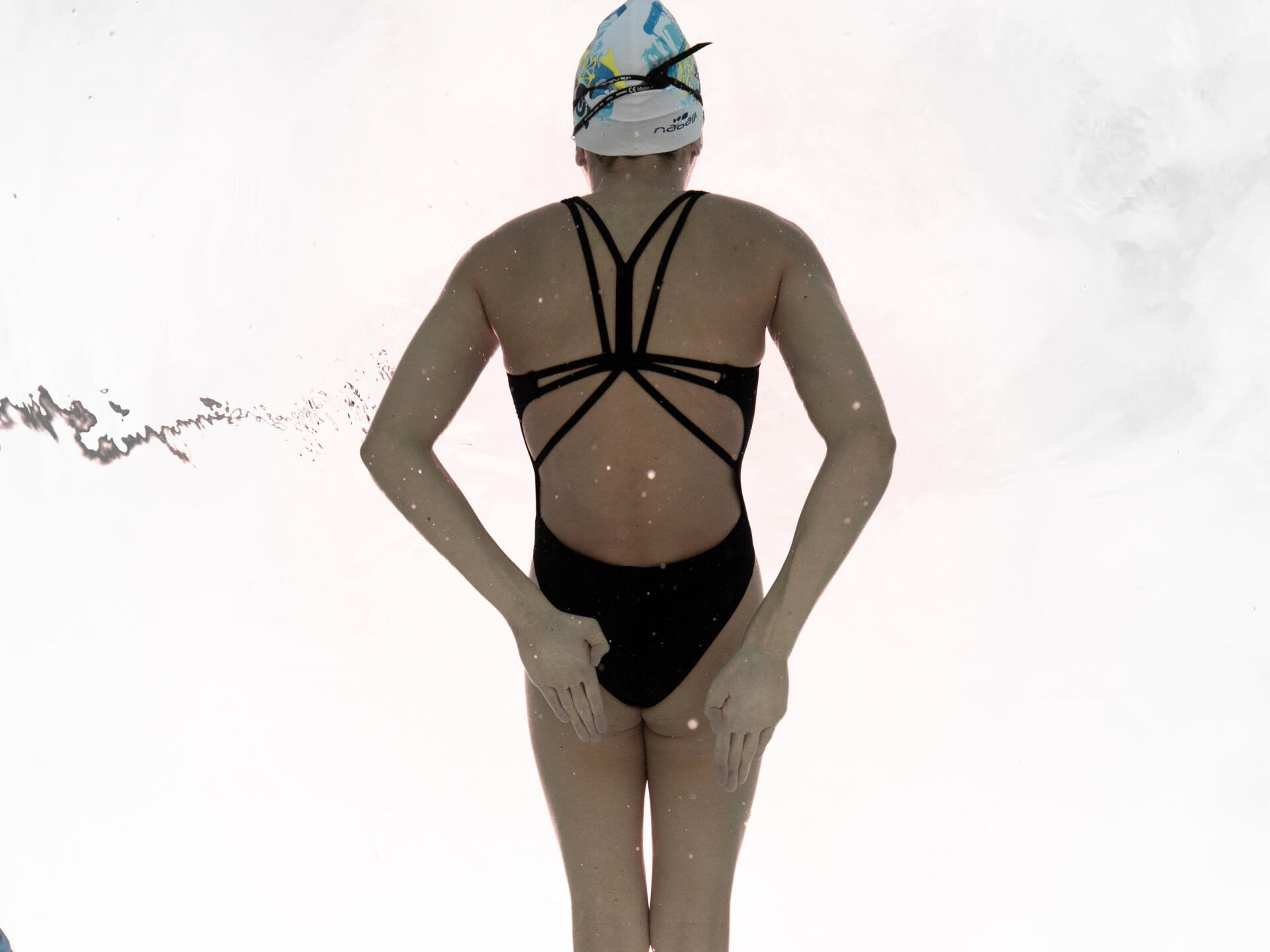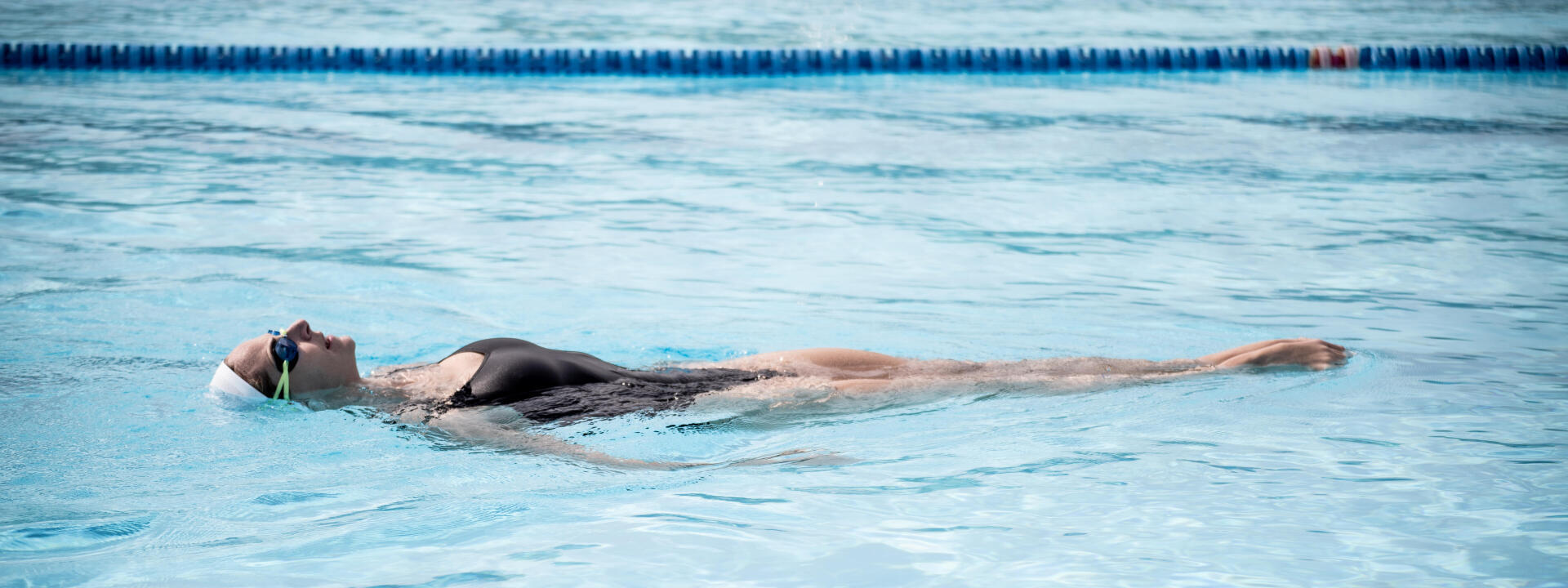The scull: one of the basics
of artistic swimming
This is one of the very first techniques that young swimmers learn.

This is the movement we will be looking at together today. What is it and, more importantly, how do you do it?
If you have read our article “Sailboat, ballet leg, flamenco, double leg”, then you may be wondering how swimmers make this kind of move while keeping their body on the surface of the water. They need a few things: strong core muscles, loads of stretching and, most importantly, good sculling! This is the movement we will be looking at together today. What is it and, more importantly, how do you do it? Carry on reading to discover everything there is to know about sculling!
This is one of the very first techniques that young swimmers learn.

Step 1
This is an arm movement you make when lying on your back that enables you to travel, change formation and do figures like
sailboats or ballet legs

Step 2
Start the movement beneath your buttocks, moving your hands inwards from the outside

Step 3
Pivot your wrists to press against the water.
That's it, now you're sculling!
Depending on the position of your wrists, you can move headfirst - with your palms moving outwards - or footfirst - with your palms moving inwards - , or you can remain immobile - with your wrists perfectly flat. In this case, your movements really help to keep your body on the surface.
But that's not all! The position of your body is also very important when sculling. You must be taut and stretched from your head to the tips or your toes, and then try to push your hips towards the ceiling.

Did you know? One of the criteria used to judge mandatory figures in competitions is the fact that the swimmer stays in the same place facing the judges when sculling, throughout the complete figure. A weighted strip is placed in the water along the side of the pool to act as a visual marker.
Which is why it is important to stay high in the water and in the same spot!

Triple world champion and Decathlon's Artistic Swimming ambassador, Virginie Dedieu shares her tips on sculling.
“It is important to press your fingers together tightly to keep solid hands. The secret is stretching. The more you try to look behind you and to bring the water line up to the level of your eyebrows, the more balanced and lighter your body will be, enabling it to stay on the surface.”
One of my coaches used to say: “Stretch as if a piece of wire was pulling your head one way and your feet the other way”. That's the idea! The more you stretch and look behind you, the better your sculling will be. Staying straight also reduces the weight on your arms. A stiff body is easier to carry!
There are several exercises to improve your sculling movement. You can put your feet in the channel in the wall of the swimming pool. In this way, you can concentrate on your movements, stretching and balance, without having to worry about the weight of your legs, which can be distracting to begin with.
You can also work on your sculling in motion. Put a pull buoy between your lower legs. This will help you to stay afloat, so that you can concentrate on your arms!
So now you know all my tips on sculling. Now… it's your turn!

I was 9 years old when I discovered synchronised swimming. My Mum enrolled me in a club. I liked theatre, I was very comfortable in the water and fascinated by anything to do with glitter. And it quickly became very clear that synchronised swimming and I were in it for the long run! I love the type of efforts that this discipline demands.
Stretching, holding your breath, moving around in every direction and every dimension, smiling, plus the teamwork. A team can be a source of huge strength! Helping each other, support, perseverance,
perfectionism, stress management. Synchronised swimming was my best school of life, both as a swimmer and a coach.